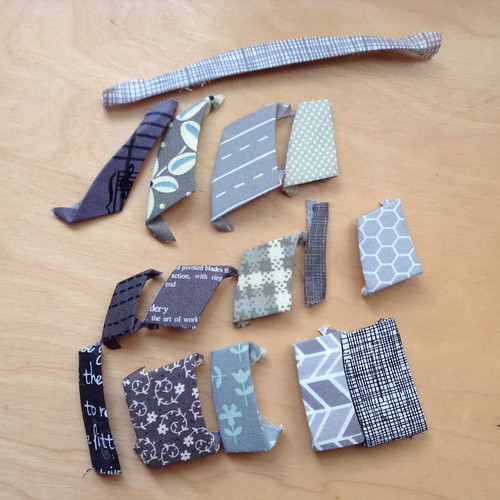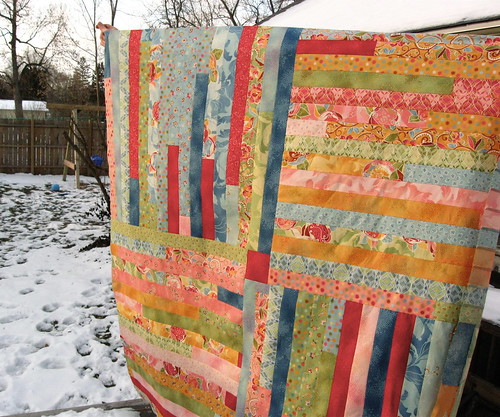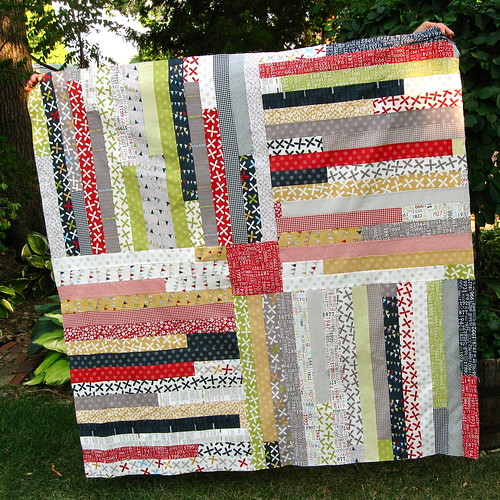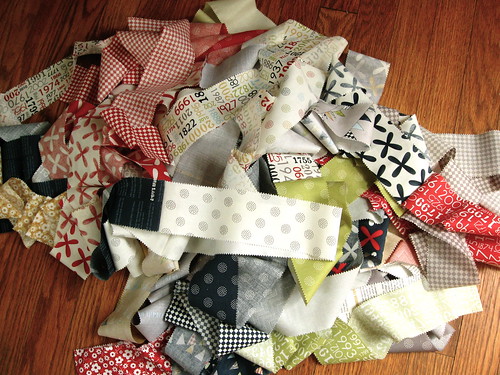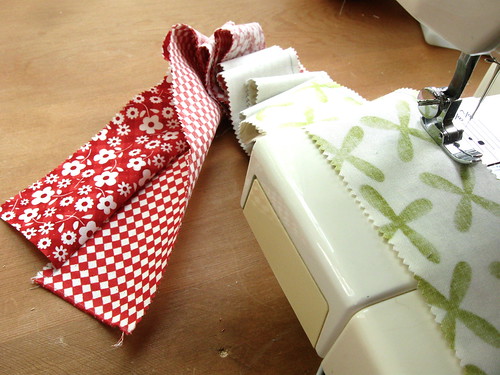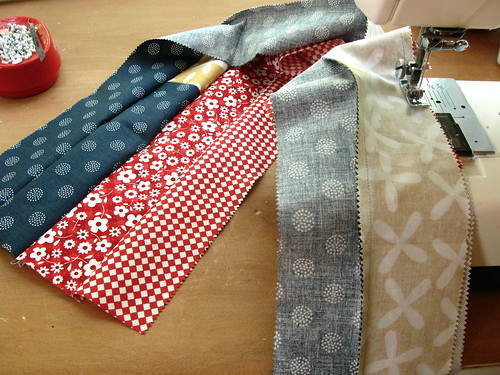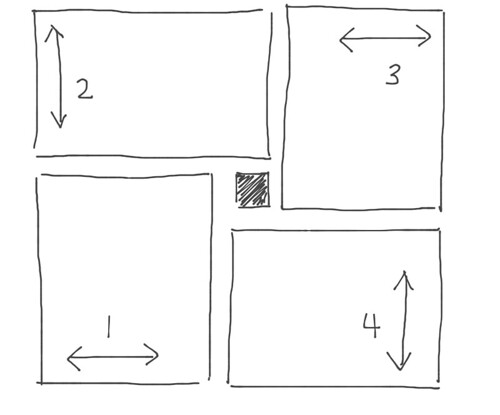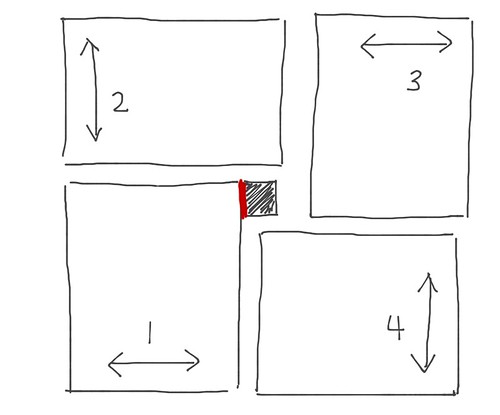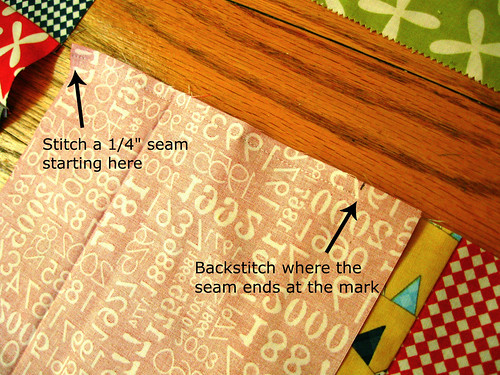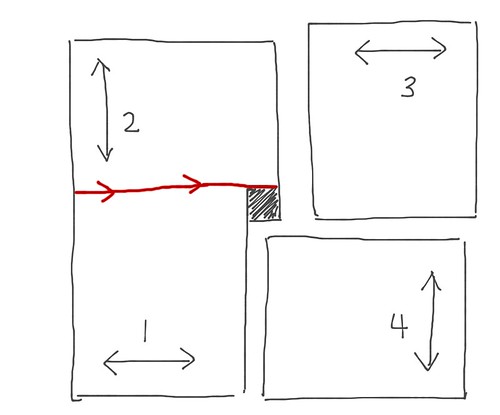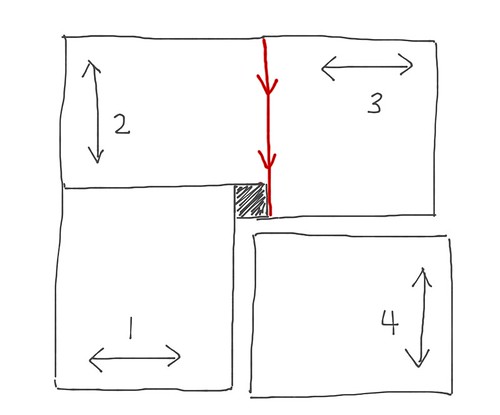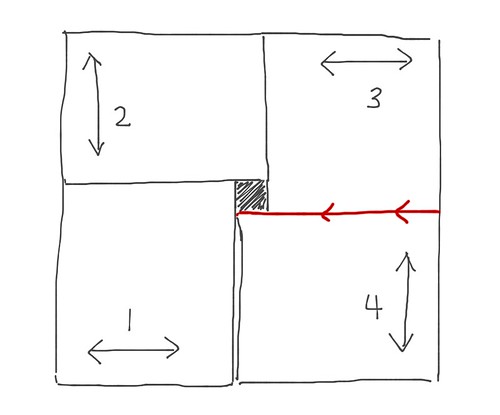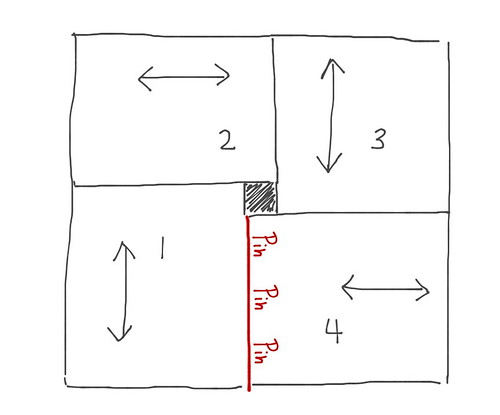***PHOTO DISCLAIMER*** I took these photos after dark and with no flash,
so please pardon any colors that are "off" and ignore any blurriness.
Unlike my first tiny house tutorial, this time I didn't use the foundation paper at all. I had the opportunity to try out a Singer Featherweight at the quilting workshop in Colorado. The feed dogs (and the foot) on that machine were so narrow and the stitching was so straight
that tear away paper wasn't needed.
Start with a 1 inch wide and 2 inch long piece of house color and door color fabrics
and stitch them together.
Then add sections of house fabric on either side of the door.
Sew some background color (medium Kona gray in this case) on either side of the house color.
Then roughly trim the top and bottom edges of the block,
knowing that you can always trim it smaller if needed.
Next, chose the roof fabric.
For my block, I wanted a crooked little red chimney sticking out of that roof. I had to start with sewing some background fabric on a piece of red solid. Again, this piece is 1" wide.
I wanted a chimney that was a little fatter at the top than the bottom. So, I made my fabric a little crooked before sewing. Also, I want a slanted roof with the chimney on the right. Notice how the fabric on the right side of the chimney has to be longer than the chimney itself.
Once you've sewn more background fabric on either side of the chimney piece,
set the ruler at the angle you like for the roof slope. Trim off the extra fabric
(being sure to leave enough for a seam allowance).
Test out the house, with the roof fabric and the angle you cut your chimney/background fabric at. Carefully flip back the chimney/gray section while keeping the same angle--but be sure to adjust your fabric slightly for the seam allowance.
Lay your fabrics out again and follow the steps in the photo.
Carefully follow these steps:
then flip the left roof slope portion back and line it up
so it overlaps your chalk line by 1/4".
Sew with a 1/4" seam allowance.
Use your ruler and rotary cutter to trim off the extra fabric. Then press open and
square up the roof portion of your block.
Set your house portion on top of your roof portion very carefully. Line the fabric up so you have the roof exactly as you want it to look. Then set your ruler on top of that with the 1/4" line along the top edge of the house portion. Carefully slide the house portion out without shifting
the roof portion or the ruler....
...then use your rotary cutter to trim off the excess fabric.
Sew the roof and house portions together, press, square the block with your ruler and rotary cutter
and admire your completed tiny house block!
Happy sewing to you.

